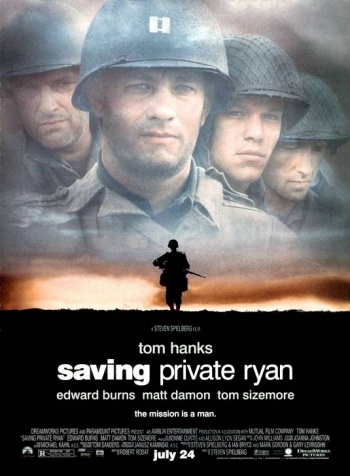
For the first opening half hour or so of Steven Spielberg's 1998 film Saving Private Ryan, you, the viewer, are subjected to a horrifying scene of utter chaos and carnage as American soldiers attempt to storm the beaches at Normandy on the morning of June 6, 1944. This opening scene has been called one of the most realistic depictions of war in cinema.
That may be but the truth is, even that doesn't quite come close. Typically in Hollywood when a guy gets shot you see a firecracker-like pop-eruption on his chest, then a bloodstain. The actor twitches violently with each shot, falling dramatically. We have come to equate Hollywood 'realism' with blood; the more blood, the more realistic the depiction. The reality of the violence a gunshot visits upon a human body is far worse, however, and far more random. There are all sorts of variables involved -- the caliber, some technical aspects of the bullet and powder, the gun itself, the distance between the shooter and the victim, clothing, trajectory, etc. etc. etc. -- but in the end, a bullet is really just a merciless little axe hacking away at its victim, arriving by a fancy delivery mechanism.
All of this might just be interesting trivia except for the internet, which is very literally an information superhighway that allows communication in ways unheard before the late 20th century. With the recent events unfolding in the Middle East, the internet has allowed people on the streets to take pictures of state violence and transmit them around the globe, proving that the dictators in Syria, Iran and Libya are lying as they deny their forces have attacked unarmed crowds. In particular, I receive through a group in Syria daily pictures of the violence inflicted on protesters by their own government. These pictures often show horrific images of corpses, of human bodies mangled in ways that Hollywood will never show (and shouldn't). There is a political point behind showing these pictures, because these people are suffering under tyranny and these pictures make the naked evil of that tyranny apparent to all the world. Still, they are also a sober reminder that the violence shown in Hollywood films, even in their most sensational moments, falls far short of the reality and to some extent that de-sensitizes us to the depth of suffering experienced both in war -- be it World War II or the Civil War or the Punic Wars -- and in unstable countries ruled by tyrants. It is also a reminder of what we have asked many of our veterans to experience, so that we do not have to. War is a part of the human condition, and as long as there are tyrants there will be war, but we should be more circumspect about when and how we wage war for as General William Sheridan noted after the Civil War, war is indeed hell.
